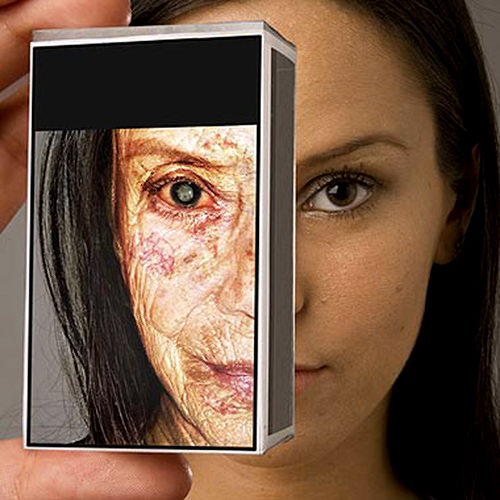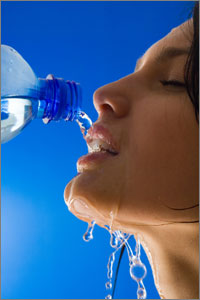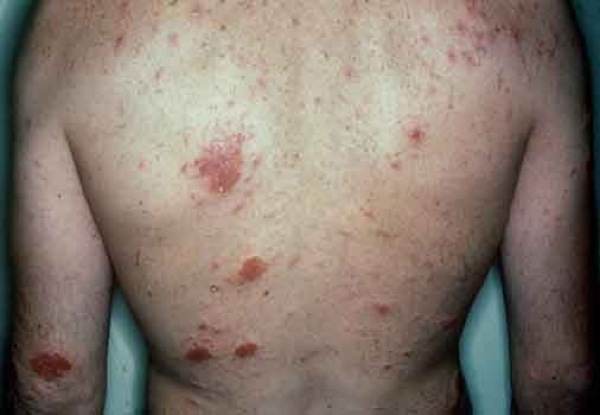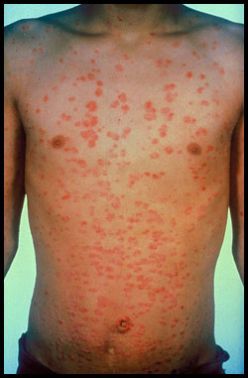Sunscreen Secrets Your Doctor Wont Tell You
Some of them are: Click Here To continue >>
How to Get Rid of Dark Elbows and Knees
- Bleach– one can bleach the affected areas. This helps to lighten the skin by a few shades and there is a visible difference in just a few days.
- Lemon- is also one of the most commonly used, natural bleaching agents. It is rich in vitamin C and citric acid and has been used as a skin whitener for ages. Some of the different ways to used lemon are:
- Rub the juice of lemon on the skin for 5 minutes and leave it on for the next 15 minutes. Post this, wash it off with warm water. Do this every day. It has antioxidants that can remove dead skin and help in reproduction of healthy cells.
- Take the skin of lemon, grate it and mix it with some curd and apply it on the hands. Leave it on for some time and rinse it off completely.
- Sugar scrub- mix banana with coarse sugar in equal quantity. Add a dash of aloe Vera to this mixture and rub it on your elbows for 10 minutes. Massage in gentle strokes, in a circular manner, wash off with water.
- Lime and coconut- this is also one of the most recommended treatments for dark skin. Mix lemon juice with coconut oil in a proportion of 1:2 and apply it on dark spot for 15 minutes. Wash it off with cool water.
Dark Circles- Treat Them at Home
- Hereditary– in some cases, occurrence of dark circles seem to run in the family. Irrespective of the eye color or the skin tone, predisposition of the dark circles is inherited.? This is because, these people have weak capillaries around the eyes, due to which the skin receives poor blood supply and nutrition causing the skin to darken.
- Skin tone– people who have increased transparency of the skin around the eye can have more dark circles.
- Sun exposure– sunlight can increase the melanin production to the skin and this makes the dark circles appear darker.
- Fatigue- lack of sleep affects the skin making it appear tired and fatigue. Due to this the wrinkles and dark circles become more prominent.
- The dark circles in women become more prominent during pregnancy and menstruation.
- In some people, age makes the appearance of dark circles more prominent.
There is no known method that can make dark circles disappear instantly. However, some home remedies can decrease the discoloration. Some of them are:
- Increase the intake of green vegetables and fruits.
- Boil herbal tea, strain and keep the water in the fridge. Before going to sleep, dip two cotton bolls in this mixture and place them on the eye for 15 minutes.
- Add half a lime in a glass of water and consume this on and empty stomach early in the morning. This will help the body detoxify, which will help the dark circles to reduce. For better effect, one can also consume only warm water with a dash of lime for the whole day.
Impact of Smoking on Looks
Drink more water for a glowing skin
You may have heard this a million times that drinking water can get you a beautiful skin, but despite that, never tried it. However, with each passing day, more and more people are experimenting with water therapy and benefiting from the extra usage of this ‘universal solvent’.? It’s a known fact that water can do wonders for your health, figure, hair and skin and millions of people around the world swear by the good effects of gulping down liters of water everyday. Considering the fact that 70 % of the body is made of water, the dependency of every system on water is high. Despite the fact that people are aware of this, they still prefer slurping on coffee, tea, soda, alcohol and shakes. None of this can have the same purifying and dehydrating effect as compared to that of pure, cool water. Water is also said to be the best ‘treat’ that you can give your skin. This is due to the following reason:
- Hydrates- Pure water is the best way to hydrate your body. Consuming water on an hourly basis helps to ensure that the body is not at a risk of dehydration, which can occur as a result of hot temperature, sweating and humidity.
- Detoxifies- water is the most effective detoxifying agent. Since it is the ‘universal solvent’, most of the impurities and toxins in the body can get dissolved in the water and be thrown out through sweat, breath, urine and stool. This ensures that the toxicity level in the body is under control and also helps to boost the immunity.
- Cures acne- if you have repeatedly heard advices of drinking more water when you are suffering from acne, take it more seriously. This is because, as mentioned above, it decreases the toxicity level in the body, helps to build the immune system and gets rid of the waste products which in turn help to treat pimples and acne.
The above benefits help to keep your skin hydrated, acne free and even toned. It is important to note that people should not expect ‘magic’ and assume that the effects will be visible within a day. It may take a few weeks, but the effects will certainly be there. However, some people complain that they are not able to ‘remember’ to drink extra water. For such people, it is best to carry a bottle of water in the bag. Also while sitting down at home also, either in front of the television or with a laptop, keep a bottle of water handy and sip on as and when you feel like. No matter what the commercials say, the cheapest and the most effective way to a beautiful skin is water, so the next time you feel like having a soda, open your water bottle and sip away.
Understanding Eczema
The exact mechanism of development of eczema is yet to be determined. Researchers are trying to figure out of eczema is a result of physical trauma to the skin, a result of exposure immune cells to environmental irritants or vice versa. The fact that epidermis is first defense of the body and protects it’s against irritants, allergens and microbes, it can be assumed that trauma, dehydration, change in the pH level, and microbial contamination can affect it. Clinical histor Eczema is usually found in small infants who show symptoms of persistent rashes that do not get cured despite trying various remedies. These patients usually have a family history of asthma, hay fever and allergy. The symptoms may also be accompanied by a history of poor sleep and increased irritability. Clinical features
- Lesions- the lesions can present themselves in three forms-
- Acute– these lesions are extremely itchy and are accompanied by blisters and extreme redness
- Sub acute lesions- these represent themselves in the form of severe itching, pain, stinging, burning, scaling and redness of the skin.
- Chronic eczematous inflammation- in such cases, the skin appears thick with prominent lines, excoriations and fissuring which may be accompanied by itchiness.
The symptoms also vary depending on the age of the patient
- Infants– the skin of the infants appears to be red, scaly with crusted lesions which appear on the extensor surfaces, cheeks or scalp.
- Childhood- lesions in children have less the appearance as that of lichen planus with red, scaly skin on the flexor area and on some areas of the wrists, ankles and neck.
- Adults- in adults, the distribution of this disorder is similar as to that of children minus the fact that the skin appears to be thicker with increased skin markings. ‘?
Causes
Eczema appears to have a genetic origin and appears due to gene-gene and gene environment interactions. Thus, if a person has a history of eczema in the family and the disease gets triggered due to environmental factors, they have high chances of developing this disorder. It is more common in children below the age of 6 and can be easily treated. This disease is not infectious and cannot spread to other people through contact.??
Beneficial Vitamins for Healthier Skin
Skin is the outermost part of our body and it is essential for us to enjoy attractive and healthy skin as it is scientifically considered as the biggest organ of the body. The list of phenomenon contributing to the adversities of skin is quite extensive but even a broader range of options is available for the betterment of our skin. Hence, all individuals, whether affected by skin issues or not, should adopt these efficient measures in order to ensure good health of the skin. Neglecting skin care is a self induced health hazard as this may lead to drab skin, flakes and other maladies.
What makes skin healthy?
- Vitamins and minerals: Significant supply of vitamins and minerals to the skin ensures its health. When human skin is provided with sufficient amount of nutrition it repairs and maintains its health to a considerable condition
- Daily care: Skin are prone to damages due to daily wear and tear; hence, regular cleansing and care for skin is significant, in order to maintain your skin quality. Washing your skin with suitable formulas may be beneficial but try to obviate harsh soaps and detersives.
- Skin care against sun: It is also proven that too much exposure to sun rays may be hazardous to your skin. Hence, there are specially formulated sunscreens which keep your face protected from the harmful rays of the sun.
- Diet: Diet is the most significant part of skin care program as the quality of your skins denotes your diet and habits. Hence, if you lack of vitamins necessary for skin, try to compensate for these vitamins through supplements.
Essential Vitamins for Skin:
Vitamin A:
- Benefits: Vitamin A is beneficial for skin as it promotes normal growth as well as development of skin cells. It also maintains the health of skin tissues, immune system as well as red blood cells. Vitamin A is also a significant antioxidant. It shows significant effects on skin which includes complementing skin tone, eradicating fine lines, enhances the elasticity of the skin and invigorating revitalization of skin cells.
- Source of Vitamins A: Known sources of Vitamin A are egg yolk, dairy products including milk, fish and fish oil and liver.
Vitamins B:
- Benefits: Vitamins B complex is actually a group of B vitamins and is found beneficial for various physical factors. It is essentially required for protein metabolism and developing red blood cells. When vitamin B is used for skin care measures, it promotes oil secretion as well as obviates excess oiliness, truncates the possible risk of skin blemishes. Vitamin B due to its excellent properties possesses the ability to debar scaling of skin as well as prevents dermatitis
- Sources of Vitamin B: There are rich sources of vitamin B such as poultry products, sea foods especially fishes, fruits such as bananas, green leafy vegetables, milk and other dairy products.
Vitamins D:
- Benefits: Vitamin D also posses various benefits such as generation of skin cells as well as helps in calcium permeation. ??Vitamin D is known to impart moisture to the skin which conditions the skin surface. It is also known to encourage standard tissue development.
- Sources of Vitamin D: Vitamin D can be consumed through fish such as herring and salmon, egg yolk, pasteurized milk and liver etc.
Vitamins E:
- Benefits: Vitamin E is considered highly significant for the development of healthy tissues and it is also an effective antioxidant. Similar to Vitamin D even Vitamin E helps in moisturizing the skin surface. This vitamin E is also known to prevent damages caused due to free radicals. It is an efficient organic molecule which also repairs the wear and tear of the skin.
- Sources of Vitamins E: Vitamin E can be obtained through forfeited cereals, nuts and oils from nuts, tomatoes, pumpkin, blue crab, broccoli etc.
Vitamin K:
- Benefits: Vitamin K helps the skin by reducing bruises and truncates or eradicates the presence of dark circles.? Vitamin K is also known for its properties to cure actinic purpura which is usually found in aged skin or sometimes in case of young individuals.
- Sources of Vitamin K: Some Foods Rich in Vitamin K are Cauliflower, Brussels sprouts, lean meat, tomatoes, broccoli and most other green leafy vegetables.
Including the aforementioned eatables in your well define regular diet will help you ensure the healthfulness of your skin and make your skin look as well as feel healthy and attractive. However, intake of some vitamins in highly excessive amount may lead to some abnormalities; hence, one should follow the ideal daily recommended intake of vitamins according to age and other physical aspects. A doctor or certified dietician may help you understand your daily vitamin requirement of your body. Thus based on a strategized diet plan consider supplying these vitamins to your skin for its betterment.
All You Need to Know About Psoriasis
Psoriasis is a complicated disease which can occur due to two reasons
- Genetic
- Immune mediated
Genetic
Psoriasis can run in the family. Many patients who have reported this have a genetic history of this disease.
Immune mediated
In carious cases, the disease occurs when the person has had a traumatic experience, stressful life or a sudden shock. But it’s not necessary that the disease arises only post a trigger, it can also be idiopathic (no known cause). When this disease is triggered, it can result in a severe release of leukocytes (T cells) to the dermis and epidermis causing the scaly, psoriatic plaques. Histologic examinations reveal presence of T cells in large numbers in psoriatic lesions. Studies have shown that if 20 % of the body surface is affected with psoriasis lesions, it has around 8 billion blood circulating T cells and the dermis and epidermis have 20 billions T- cells. Due to this there is an unregulated process which produces various cytokines. It can also occur due to increased activity of t-cells in the skin.
Occurrence
This is disease is more common in patients who smoke, drink alcohol, suffer from depression and have suicidal tendencies. It is also associated with presence of other diseases such as cardiovascular disease, lymphoma, metabolic syndrome, melanoma and cancer.? Patients who are taking potential harmful and light therapies are also at the risk of contracting this disease. Psoriasis is also said to have an effect of a person’s mental equilibrium.? This disease can impact the quality of life and may shorten the person’s life span. As it involves the palms and soles, it affects person’s daily activities.
Symptoms of psoriasis
- Aggravation of chronic erythematous scaly area
- Sudden appearance of many small areas of scaly redness
- Streptococcal throat infection, viral infection and immunization
- Antimalarial drug, or trauma
- Family history of similar rash
- Pain
- Pruritus
- No fever
- Vesicles
- Long-term rash along with joint pain
- Cassation of steroid therapy.
Types of psoriasis
- Plaque psoriasis– Presence of raised and inflamed lesions which are covered with a silvery white scale and are characterize??plaque psoriasis. These scales can brushes away to reveal inflamed skin beneath. This is usually found on the knees, elbows, scalp, and trunk.
- Gutatte psoriasis– These are characterized by presence of pink papules which are 1-10 mm in diameter. They are commonly found on the trunk in the form of scaly lesions. It appears 2-3 weeks post an upper respiratory tract infection (URI) due to streptococci. ??This form of psoriasis occur post streptococcal infection in the pharyngitis, post steroid therapy or after using antimalaril drugs.
- Pustular psoriasis– This present in the form of non-infectious pustules which mainly appear on the palms and soles and in some cases, they are also found on other parts of the body. This form of psoriasis usually occurs first as erythema then pustules and finally as scales.
- Nail Psoriasis- these are characterized by pits on the nails which thicken and develop a dirty, yellowish tinge. On aggravation, the nails get separated from the bed.
- Psoriatic arthritis- This disease affects 10- 30 % of present skin symptoms. The arthritis is usually present in the extremities, i.e the hand and feet and at times the large joint which can cause stiffness, pain and may aggravate to the stage of damaging the joints.
- Inverse psoriasis‘ This is a rare form of psoriasis which in areas which are moist such as the armpits, groin, under the breast and in the skin folds. During inverse psoriasis, the skin appears smooth due to inflamed lesions, without scaling.
- Erythrodermic psoriasis- This form of psoriasis is characterized by pain, itching, erythema and fine scaling. Erythrodermic psoriasis occurs all over the body and is usually accompanied by fever, chills, hypothermia and dehydration.
- Scalp psoriasis- This type of psoriasis affects 50 % of patients and occurs in the form of erythematous raised plaques. It results in formation of silvery white scales on the scalp.
- Oral psoriasis– Oral psoriasis is characterized by presence of whitish lesions inside the mouth which tends to get aggravated easily. It can also be found as severe cheilosis which can spread to the skin around it.
Treatments
There are various treatments available which are administered based on the type of psoriasis and the condition of the patient. The three most common modes of treatment available are-
- Oral medications
- Injections
- Light therapy
Oral medications for psoriasis ‘
- Methotrexate– the patient is usually put on this drug for a week at doses ranging from 2.5 to 25mg. This drug has an immunomodulatory effect and helps to control psoriasis which affects skin, nails and joints.
- Acitretin- acitretin is a retinoid. It is effective in treating pustular psoriasis. ??This drug has ill effects on women who are in the reproductive cycle and hence is only given to men and women post menopause. This drug inhibits cell replication by controlling cellular differentiation inside the epidermis.
- Neoral- this is usually given to people who have had organ transplant and hence develop immunosuppressant psoriasis. This is usually given to people when their disease reaches a severe stage. It also has strong side effects such as kidney toxicity, hypertension, skin cancer and lymphomas.
Injections- injections helps to suppress the immune system and have a faster effect than oral drugs. Some of the most common injections are
- Alefacept
- Adalimubab
- Infliximab
- Etanercept
- Ustekinumab
Light therapy- Most of the people with psoriasis show a market improvement on receiving light therapy. UVA and UVB rays affect the chemical reactions due to which the skin cells do not multiply easily and remain normal.









